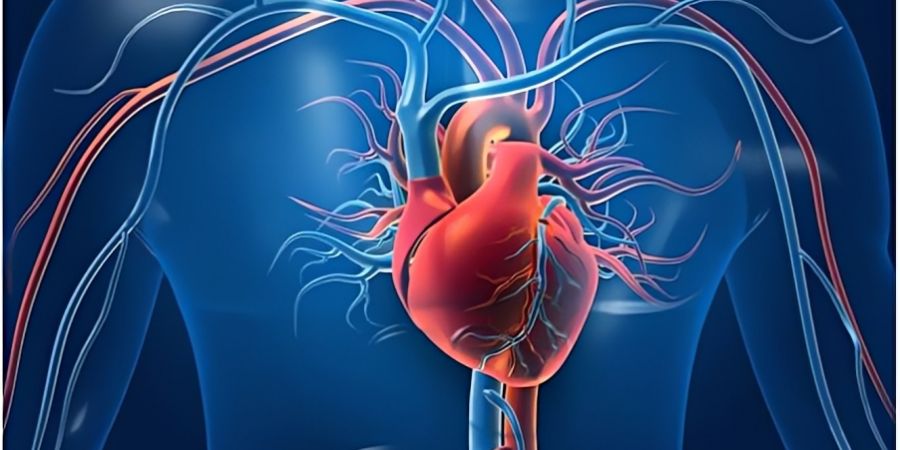

In most animals, the heart is a muscular organ.
Blood is pumped by this organ through the circulatory system's blood arteries.
[1] The blood that is pumped around the body supplies nutrients and oxygen to the body, while also transporting metabolic waste like carbon dioxide to the lungs.
[2] The human heart is situated in the centre of the chest, between the lungs, and is roughly the size of a closed fist.
The heart is made up of four chambers in humans, other mammals, and birds: upper left and right atria, and bottom left and right ventricles. The right atrium and ventricle are frequently referred to as the right heart, whereas their equivalents on the left are referred to as the left heart. In contrast, reptiles have three chambers, while fish only have two—an atrium and a ventricle. Due to cardiac valves, which stop back flow, a healthy heart only pumps blood in one direction. The pericardium, a protective sac that surrounds the heart and holds some fluid as well, is present. There are three layers that make up the heart's wall: the epicardium, the myocardium, and the endocardium.
The rhythm of the heart's blood pumping is controlled by a collection of pacemaker cells in the sinoatrial node. These produce a current that flows via the atrioventricular node and along the heart's conduction system, causing the heart to beat. Deoxygenated blood from the superior and inferior vena cavae enters the human heart through the right atrium and travels to the right ventricle. It is then pushed into the pulmonary circulation and delivered to the lungs, where it is oxygenated and released carbon dioxide. After returning to the left atrium, the oxygenated blood travels through the left ventricle and is then pumped into the systemic circulation through the aorta. It then passes through arteries, arterioles, and capillaries, where nutrients and other substances are exchanged with cells, losing oxygen and gaining carbon dioxide, before being brought back to the heart through veins and venules. At rest, the heart beats roughly 72 times per minute. Exercise improves heart health and lowers resting heart rate over time, although briefly raising it.
What is the heart's size?
The heart measures 12 cm in length, 8.5 cm in width, and 6 cm in thickness. Additionally, the average weight of the heart is 230-280 g for women and 280-340 g for men.
How do your heart and other organs interact?
Your heart regulates your heart rate and other bodily processes in conjunction with other bodily systems.
The fundamental systems are:
Your nervous system aids in the regulation of your heart rate.
When you are at rest or under stress, it transmits signals telling your heart to beat more quickly.
Your endocrine system produces and releases hormones.
Your blood vessels are instructed to tighten or relax by these hormones, which has an impact on your blood pressure. Your thyroid gland's hormones can also instruct your heart to beat more quickly or more slowly.
I appreciate you reading my blog.
Have a great day!










